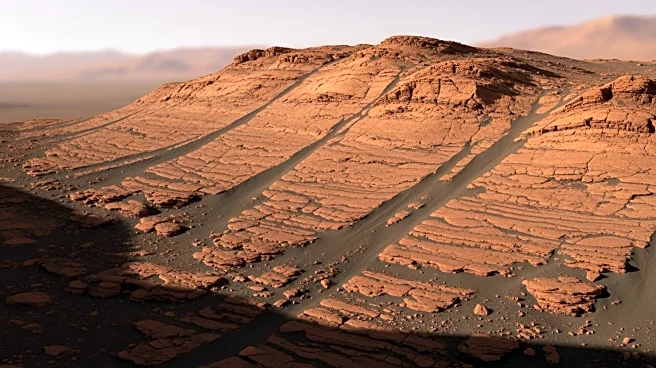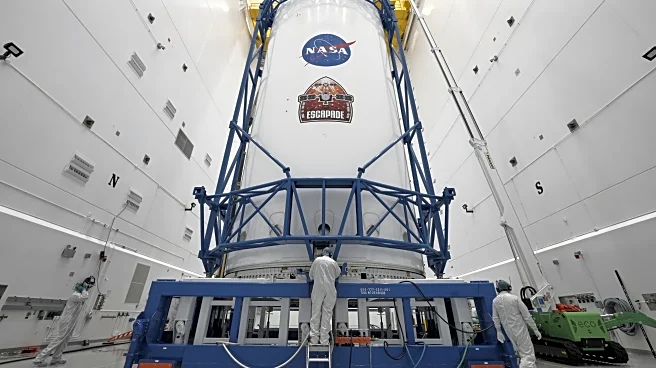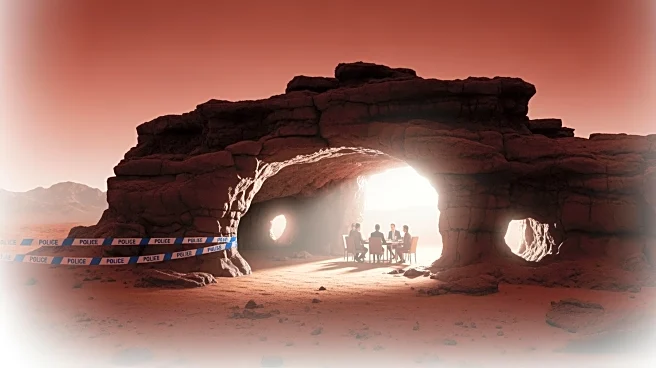What's Happening?
Scientists have finally explained the origin of millions of black streaks on Mars, a mystery that has persisted since the 1970s. These 'slope streaks' are dark features found on Martian slopes, initially
thought to be caused by landslides from melting ice. Recent studies reveal that these streaks are formed by dry processes, primarily driven by seasonal wind and dust erosion, rather than water. The streaks are concentrated in five key regions on Mars, forming when wind speeds exceed the threshold for dust mobilization. This discovery was made possible by analyzing images from NASA's Mars Reconnaissance Orbiter.
Why It's Important?
Understanding the formation of slope streaks is crucial for comprehending Mars' geological processes and its dust cycle. These streaks may significantly contribute to atmospheric dust, which impacts the planet's climate and could affect future human colonization efforts. The findings also refine our knowledge of Martian surface dynamics, aiding in the planning of future missions and the development of technologies for potential human settlement.
What's Next?
Future Mars missions may focus on studying the dust cycle and its implications for the planet's climate and potential human habitation. Researchers will likely continue to monitor slope streaks to better understand their lifecycle and contribution to atmospheric dust. This could lead to advancements in predicting and mitigating the effects of dust storms on Mars, which are a major concern for long-term human presence on the planet.
Beyond the Headlines
The study of Martian slope streaks offers insights into planetary science and the challenges of space exploration. It highlights the importance of understanding extraterrestrial environments for successful colonization. The findings may also influence the design of habitats and equipment to withstand Martian dust storms, ensuring the safety and sustainability of future missions.













